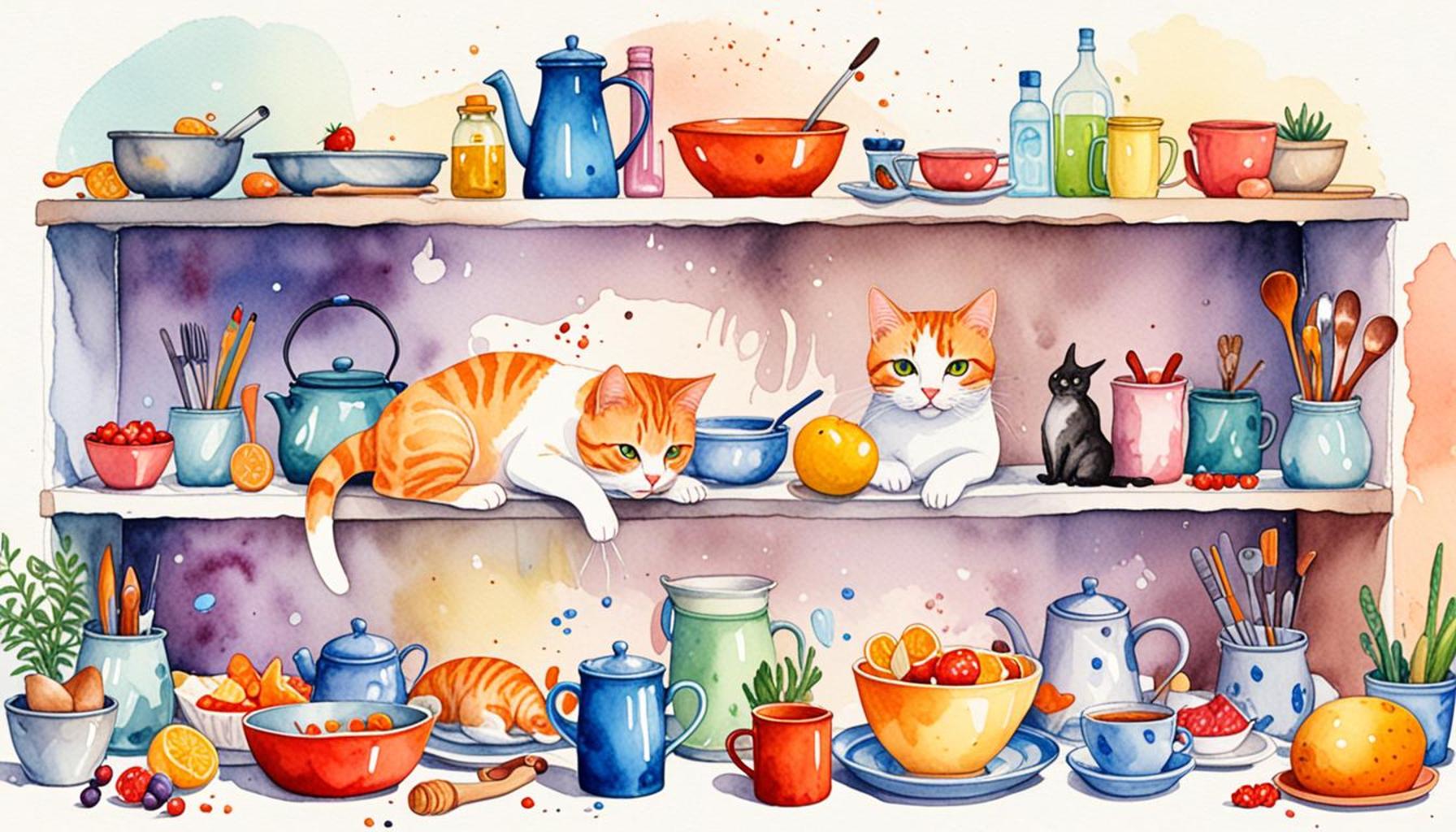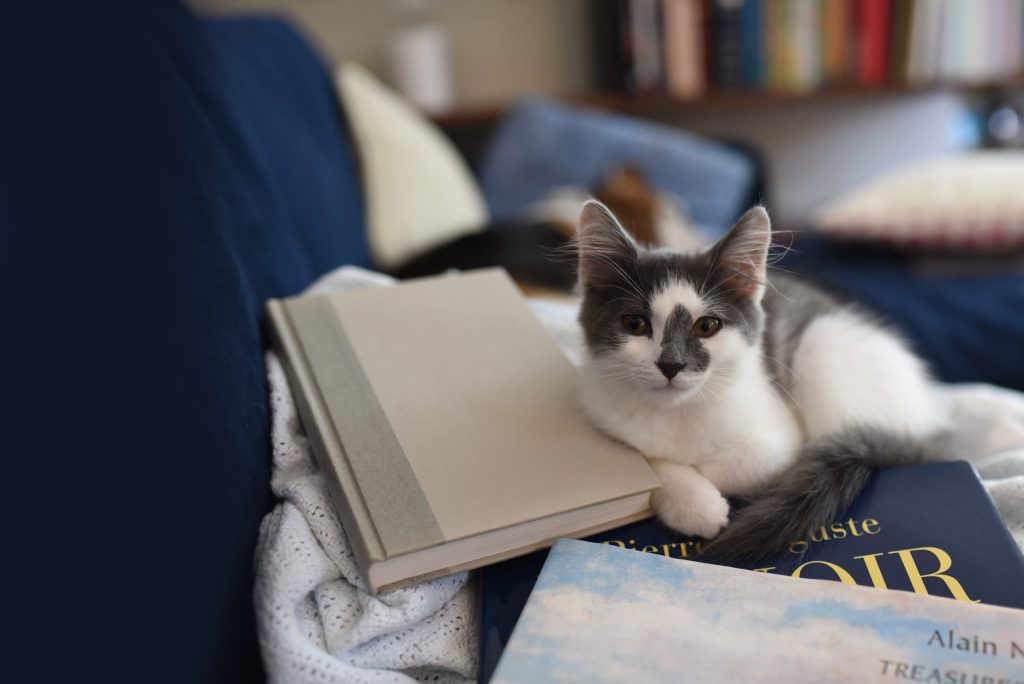How Daily Routine Influences the Behavior of Domestic Cats

The Significance of Routines in Cat Care
Have you ever noticed how your furry friend seems to follow the same patterns every day? These behaviors aren’t just adorable quirks; they play a vital role in your cat’s overall well-being. A well-structured routine doesn’t just make life easier for owners; it also promotes a healthier and happier feline. In this exploration, we will uncover the multifaceted ways in which consistent daily habits impact domestic cats and why they are essential for our pets.
Daily routines provide a foundation of security for cats. Naturally observant creatures, cats thrive in environments where they can predict what will happen next. For instance, regular feeding times not only ensure that your cat receives the right nutrition but also curtail anxiety. A predictable schedule teaches your cat that food will always come at a certain time, which can reduce the frantic behaviors associated with hunger, such as meowing or searching through cabinets.
Examples of Routine Influences
- Feeding Times: Establishing specific times for breakfast and dinner can help maintain a healthy weight. Many veterinarians recommend portion control and scheduled feeding to combat obesity, a growing concern among pets in the U.S.
- Playtime: Incorporating daily interactive play sessions—like using a feather wand or laser pointer—fosters both physical activity and mental engagement. This helps prevent obesity and reduces the risk of behavior issues stemming from boredom, such as scratching furniture or aggressive behavior.
- Sleep Schedule: Cats typically sleep between 12-16 hours a day. A predictable sleep schedule allows your furry companion to get the rest it requires. This can be as simple as creating a serene sleep environment by keeping the house quiet during designated nap times.
An established routine goes beyond just convenience; it can significantly alleviate behavioral problems in cats. If there are sudden changes in their environment—like moving to a new home or introducing a new pet—having steadfast routines can help lessen the stress that often leads to undesirable behavior, such as hiding, over-grooming, or destructive scratching. Tackling these issues benefits both pet and owner by fostering a more enjoyable cohabitation experience.
Moreover, learning to recognize signs of happiness and distress in response to daily patterns can further enhance the bond between you and your cat. For example, a relaxed body posture, purring, and kneading are indicators of contentment, while hiding, excessive vocalization, or aggression may signal discomfort or stress. By being attentive to these behaviors, owners can make necessary adjustments in routines to restore balance, ensuring their feline friend feels safe and cared for.
As you delve deeper into the compelling relationship between daily habits and cat behaviors, you may discover simple adjustments that can lead to significant improvements. By maintaining consistency and nurturing your cat’s routine, you’re not just shaping its behaviors; you’re also crafting a harmonious life for both you and your cherished pet.

LEARN MORE: Click here to discover the importance of proper nutrition for your pet’s health
The Impact of Routine on Cat Behavior
Understanding how daily routines influence the behavior of domestic cats reveals much about their needs and preferences. Cats are inherently creatures of habit, and they find comfort in predictability. Strong routine habits not only provide stability but also contribute positively to their psychological and physical health. When these patterns are established, they help shape a cat’s interaction with its environment, family members, and even its own instincts.
Psycho-emotional Well-being: The significance of routines often extends into the emotional realm of our feline companions. For example, changing a feeding schedule can lead to confusion and anxiety for a cat. If a cat knows meals are served at the same time daily, it promotes a sense of security and eases any anxiety related to food scarcity. Additionally, predictable routines can transform a cat’s demeanor, fostering a calmer, more relaxed pet. This is vital, especially for younger cats prone to hyperactive behavior, as consistent play and rest can channel their energy into positive outlets.
Daily Activities and Their Influence
- Grooming Rituals: Cats are notorious for their self-grooming habits, and establishing a mutual grooming routine can significantly impact their social behavior. Whether brushing your cat or allowing them to groom themselves, these rituals promote not just hygiene but also bonding opportunities.
- Exploration and Adventure: Designating an exploration time helps satisfy a cat’s instinctual need to hunt and explore. Engaging their curiosity with cat-safe toys or interactive environments can lead to fewer behavioral problems, allowing them to express their natural instincts healthily.
- Social Interactions: If cats engage in regular playtime with their human companions, it can significantly reduce territorial aggression and improve their overall sociability. Structured interactions foster trust, allowing cats to feel safe in their home environment.
Furthermore, daily patterns can mitigate stress during significant life changes. For instance, if a new pet arrives or you are relocating to a different home, maintaining established routines can help ease the transition. Cats are sensitive to their surroundings, and any disruption in their schedule can lead to behavioral issues, such as hiding or increased anxiety. Thus, preserving routine amidst change is vital in ensuring their emotional stability.
Through understanding these dynamics, pet owners can make informed choices to enhance their felines’ quality of life. Careful observation of daily routines will allow you to gauge not only your cat’s reaction to changes but also their overall behavior trends. Notice how they engage in play, initiate interactions, and even respond to their environment. This awareness empowers owners to create a nurturing space where their cats can thrive emotionally and physically.
As we further explore the connections between daily routines and cat behaviors, we uncover a path towards a more harmonious relationship with our pets. Making small adjustments and remaining consistent can lead to significant improvements in their overall well-being.
Understanding the Daily Routine of Domestic Cats
The daily routine of a domestic cat encompasses a variety of activities that are crucial for its mental and physical well-being. Cats are naturally creatures of habit, and the organization of their day significantly influences their behavior. Understanding this routine can enhance the bond between owners and their feline companions.
Activity Levels and Playtime
Domestic cats are known for their distinct activity patterns, often following a crepuscular schedule, meaning they are most active during dawn and dusk. This instinctual behavior can be attributed to their wild ancestors, who hunted during these times. Providing structured playtime during these active hours can lead to increased mental stimulation and help alleviate behavioral issues such as aggression or anxiety, promoting a well-adjusted pet.
Feeding Schedules
Regular feeding schedules play a vital role in influencing a cat’s behavior. Cats thrive on routine, and having set times for meals can lead to better digestion and reduced stress, as they come to anticipate feeding times. Additionally, feeding interactive toys can enhance their hunting instincts and provide mental enrichment.
Rest and Napping
Cats are notorious for their love of naps, which can contribute to their overall health. Allowing ample opportunity for rest and sleep during the day allows cats to recharge, ensuring they are healthy and active when it matters most. Environments with cozy sleeping spots can significantly influence their behavior, providing a safe haven.By recognizing these crucial elements of a cat’s daily routine, owners can foster a stimulating and enriching environment, improving their pet’s happiness and overall behavior. Maintaining a structured daily life for domestic cats is not merely beneficial but essential for their well-being. Investigating further into their patterns can unlock secrets to enhancing their lives and understanding their unique personalities.
DISCOVER MORE: Click here to learn about nutrition’s role in your pet’s health
Understanding Your Cat’s Needs Through Routine
A profound understanding of how daily routine influences the behavior of domestic cats can lead to deeper connections between felines and their human companions. Each day unfolds an opportunity for enrichment, growth, and stability, shaping their interactions and fostering a more enriching environment. By paying close attention to their behaviors and feelings tied to routine, cat owners can significantly influence their pet’s happiness.
Feeding Patterns and Cat Behavior
Feeding times are not only crucial for a cat’s physical health but are also deeply tied to their emotional well-being. A consistent feeding schedule gives cats a sense of predictability that they thrive on. Research has shown that cats often become anxious or stressed when their feeding time is irregular. This anxiety can manifest in various ways, including increased vocalization, overeating or under-eating, and even aggressive behavior towards humans or other pets in the house.
Many experts recommend using a timed feeding system or puzzle feeders to turn meal times into stimulating opportunities. These can provide mental stimulation, encouraging your cat to engage their hunting instincts without the chaotic elements of random feedings. Observing your cat’s behavior during meal times can reveal insights into their overall mood and comfort levels.
The Role of Play in Daily Routine
Playtime is vital for feline fitness, mental stimulation, and social bonding. Regular play sessions customized to suit your cat’s natural behaviors allow them to express instincts like stalking and pouncing. Unsurprisingly, the absence of play can lead to undesirable behaviors like scratch marks on furniture or aggressive play with human hands.
Creating a play schedule that incorporates interactive toys or laser pointers can engage a cat in both exercise and mental activities. Moreover, setting aside time for active play not only stimulates your cat but can also become a bonding experience between the pet and owner. Such interactions can significantly reduce feelings of loneliness and prevent behavioral issues that often arise from boredom.
Rest and Sleep: Enhancing Quality of Life
Cats are known champions of napping, and their sleeping patterns are essential to their routine. A cat’s consistent sleep schedule contributes to good health and well-being. Interestingly, a well-rested cat will likely exhibit playful and affectionate behavior during waking hours. Conversely, a cat that is disturbed during its sleep can become irritable or withdrawn.
- Creating a Cozy Environment: Designating a specific area for their tranquility while ensuring it is quiet and free from disturbances can significantly enhance their mood.
- Nighttime Routines: Cats are crepuscular animals, which means they are most active during dawn and dusk. This natural inclination should guide your scheduling—consider interactive activities during these times instead of trying to keep them calm at odd hours.
Incorporating numerous facets that revolve around daily routines, such as feeding, play, and rest, enables cat owners to craft an atmosphere conducive to well-rounded behavior. As cats thrive on predictability, understanding and catering to their needs leads to a happy, healthy feline. The small adjustments applied to routines can yield vast improvements in their daily demeanor and emotional landscape, allowing both cats and their human families to flourish together.
DISCOVER MORE: Click here for helpful strategies
Conclusion: The Power of Routine in Shaping Feline Behavior
In summary, a well-structured daily routine is integral to the overall well-being of domestic cats. The interplay of feeding schedules, playtime, and sleep patterns not only fulfills their physical needs but also nurtures their emotional and mental states. Cats, with their inherent desire for predictability, thrive when their environments offer stability and consistency. Disruptions to their routines can lead to anxiety and behavioral issues, making it crucial for pet owners to establish and maintain a regular structure.
Understanding the nuances of routine helps cat owners create an enriching atmosphere that fosters healthy behaviors. For instance, engaging in interactive play sessions not only satisfies their natural instincts but also strengthens the bond between cat and owner. Likewise, designating appropriate meal times and quiet resting spots can significantly enhance a cat’s mood and overall demeanor.
As guardians of these remarkable creatures, it is our responsibility to cater to their intrinsic needs. By prioritizing their routines, we can transform our homes into safe havens where our feline friends can thrive. Ultimately, investing time and effort in daily care routines leads to not only happier cats but also more harmonious relationships with their human companions. To further explore the intricacies of feline behavior, consider diving into resources that detail behavioral psychology or even connecting with local feline behaviorists who can provide personalized insights.


